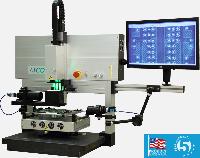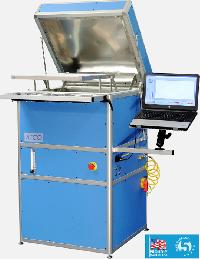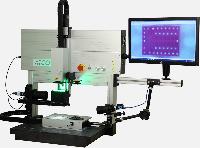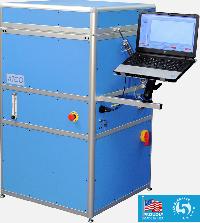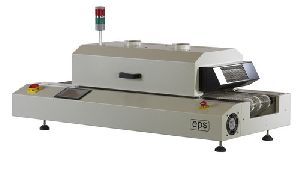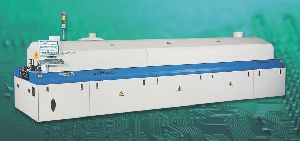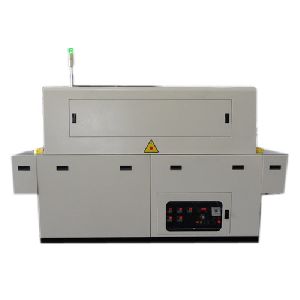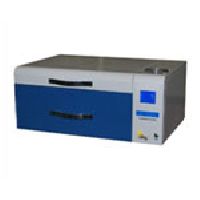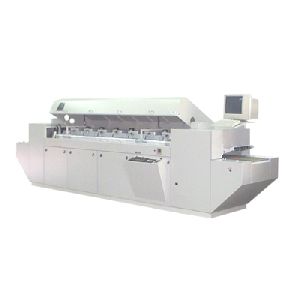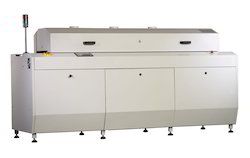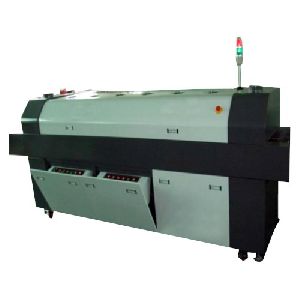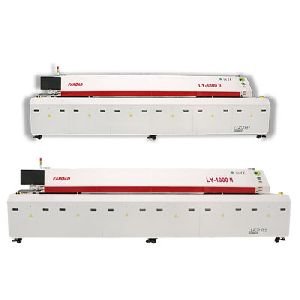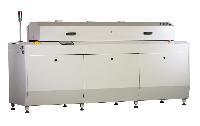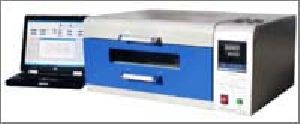- Weight226 lbs / 101 Kg
- Power208-240 VAC 20A,1 Phase, 50/60 Hz
- WarrantyFive (5) years parts and labor
- Air / Gas95-120 PSI @ 4 CFM
- Temperature / Time / AirflowClosed-Loop Software Control
The AT-GDP SMD BGA Rework Stations feature the latest vision and thermal process control technologies. Printed circuit boards and substrates consisting of components such as BGA’s, CSP’s, QFN’s, Flip Chips, PoP, Wafer Level Dies, and many other SMD’s are processed with consistently high quality results. Precise mechanics and advanced software simplifies component placement, soldering, andor rework. Operator involvement is very limited making these systems easy to setup and use. Available in benchtop and standalone configurations, these machines are ideal for prototype R&D, NPI, Engineering, Failure Analysis labs as well as OEM CEM production environments. Automation, machines' capability, and ease of use are critical for both prototype and production volume applications requiring consistency and quality. Solid design enables ultra precise placement to within 0.0002" or 5 microns. A newly implemented software driven Force Measurement System makes it possible to handle even the smallest and fragile devices along with complex packages like stacked dies or Package-On-Package (PoP). Split Vision Optics allows simultaneous top of the PCB substrate and bottom of the component viewing to superimpose and align both images. Split Imaging is a feature that creates diagonal corner viewing for alignment of larger packages at high magnification. High quality components within the optics system ensure a clear and distortion free imaging. Precise closed loop reflow process control enables mimicking the original production profile. Software contains a database of predefined profiles which the user selects based on the package and PCB being reworked. An Automated Profile Generation feature allows the user to develop an optimum profile in a single pass that may be saved for future processing. Profiles may be easily modified, optimized, and stored for future use. Settings can be adjusted on-the-fly while the profile is running. Software controls reflow via forced air nitrogen convection top heater, forced air convection localized bottom heater, and a large area Quartz IR preheater. Airflow at the top heater is monitored by the software and delivers excellent temperature uniformity. This guarantees very gentle flow which cannot disturb even the smallest adjacent components like 01005 passives. Controlled cooling of the part and PCB is accomplished via direct air nitrogen flow at the top nozzle, air flow at the localized bottom heater, and large area underside board cooling. For high value reliability assemblies such as in Aerospace, Military, and Medical applications requiring superior quality solder joints, Nitrogen gas may be purged through the top heater as a substitute for air. Numerous industry studies have shown that soldering in a Nitrogen atmosphere yields stronger, higher quality solder joints when compared to soldering using air or IR sources. This is primarily due to reduction and elimination (when reaching low levels of Oxygen) of oxidation at the bond site. It is especially the case with fine pitch devices where solder paste or flux volume at the pad site is minimal and burns off quickly at higher temperatures. Once flux burns off, good wetting cannot be achieved and results in cold, intermittent solder joint connections. If reflowed in Nitrogen, even with flux burned off, the blanket of Nitrogen gas will prevent pads and solder bumps from oxidizing. The result is good wetting and ultimately strong quality solder joints. Benefits of soldering in Nitrogen is also documented when processing multi-layer, high thermal mass assemblies especially those with solid ground planes. As the process window is extended due to longer heating times, solder pastes' flux burns off and the same poor wetting is observed in coarse pitch as with fine pitch devices. Purging Nitrogen at the top heater extends the process window and allows achieving quality solder joints even if the cycle is considerably longer due to the assemblies heavy thermal mass. Like other machines that our company has been producing for over the past 30 years, AT-GDP was designed to be very easy to use and capable of handling both today’s and tomorrow’s requirements. AT-GDP series offers unparalleled performance aimed at applications where precision and consistently high quality results matter. Ranging from R & D Engineering departments to production environments typical of volume repair centers.
